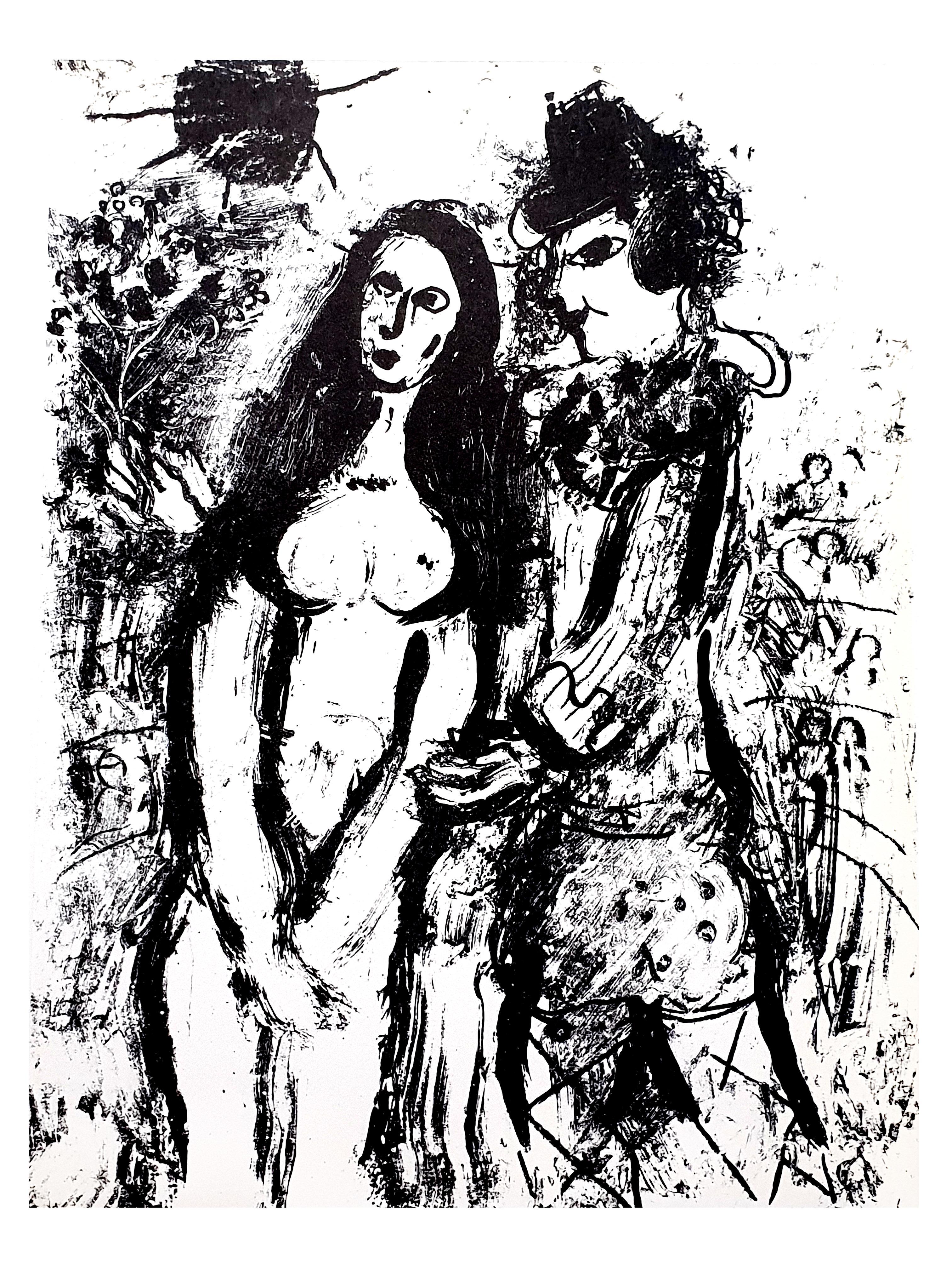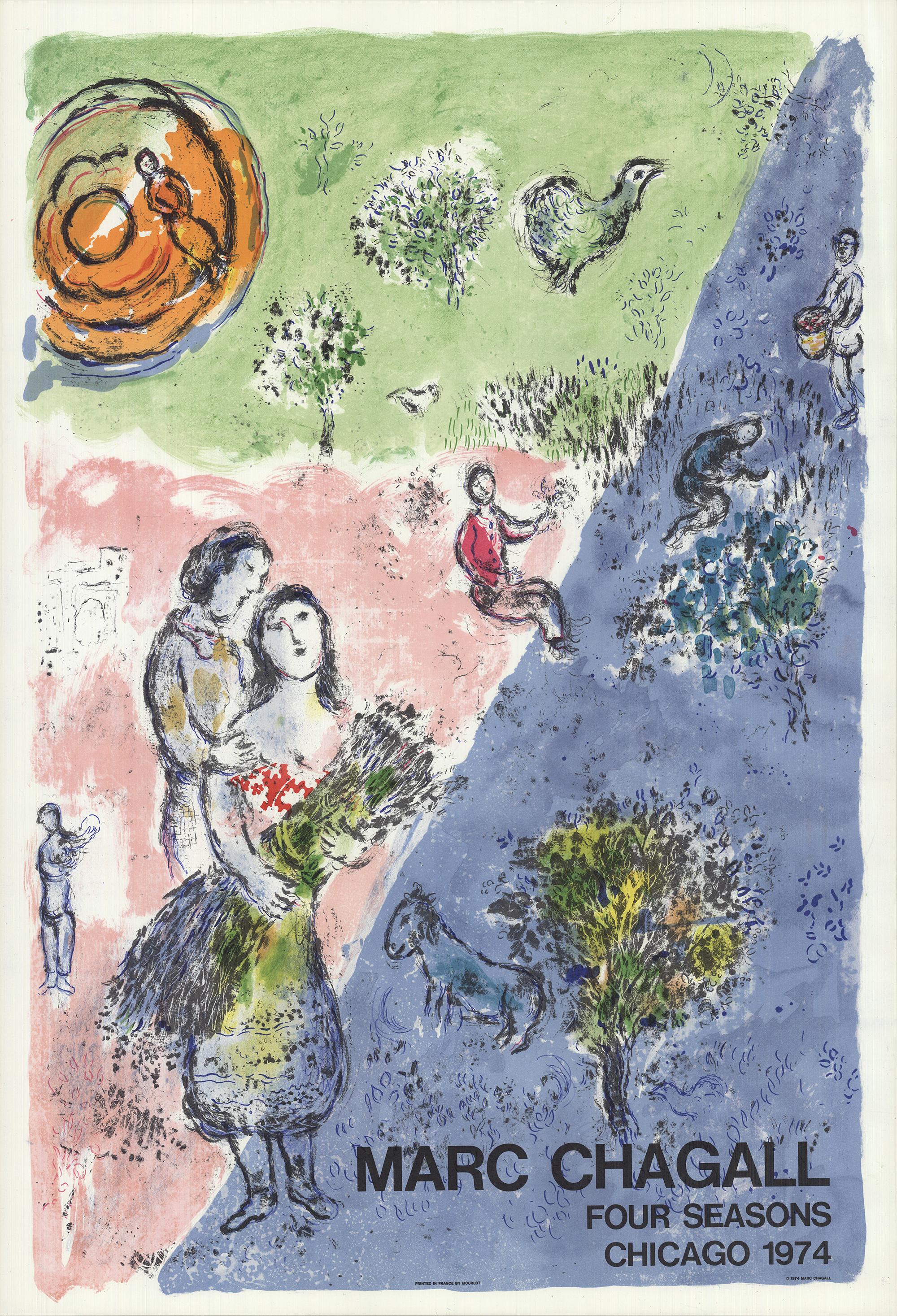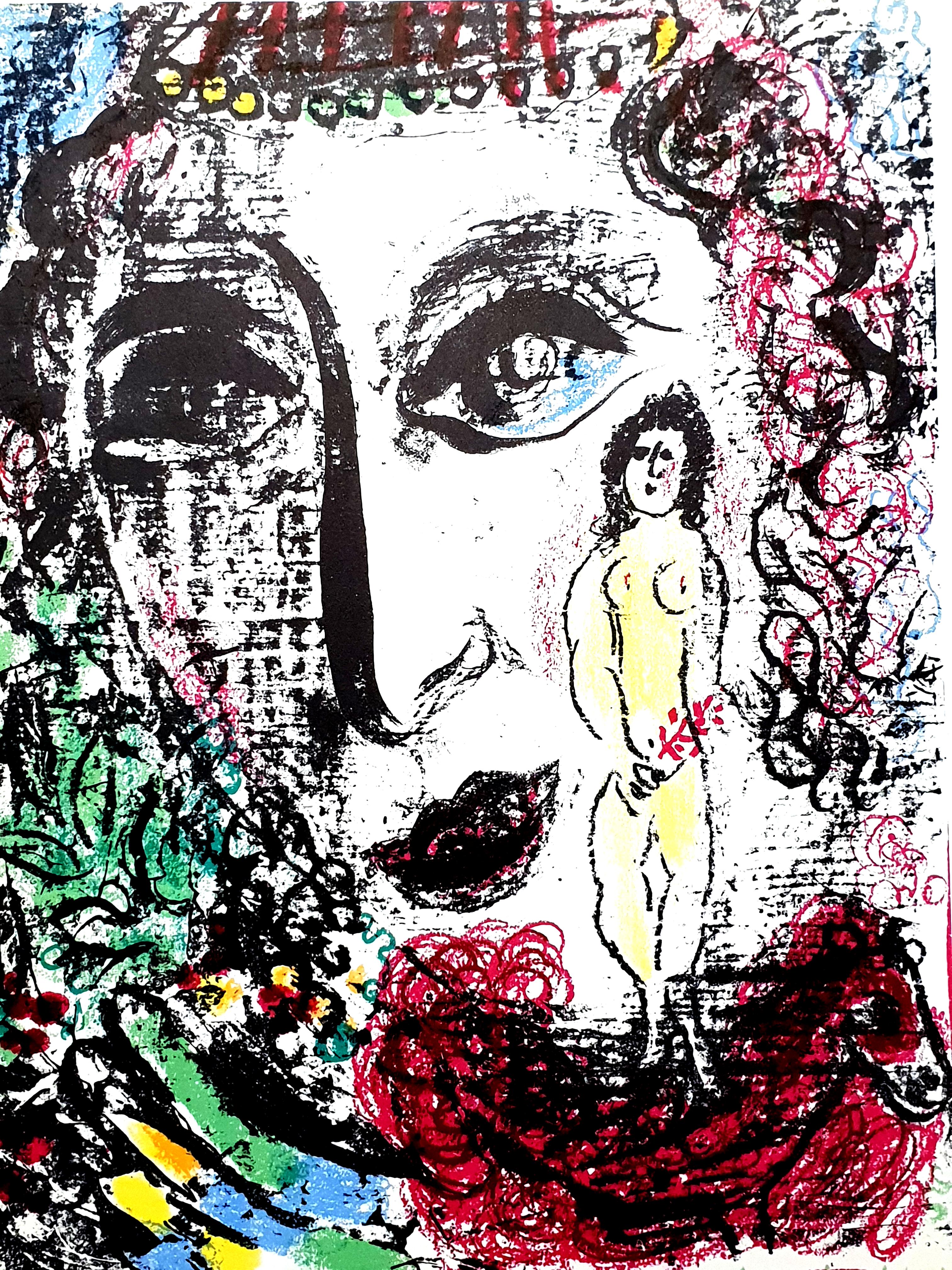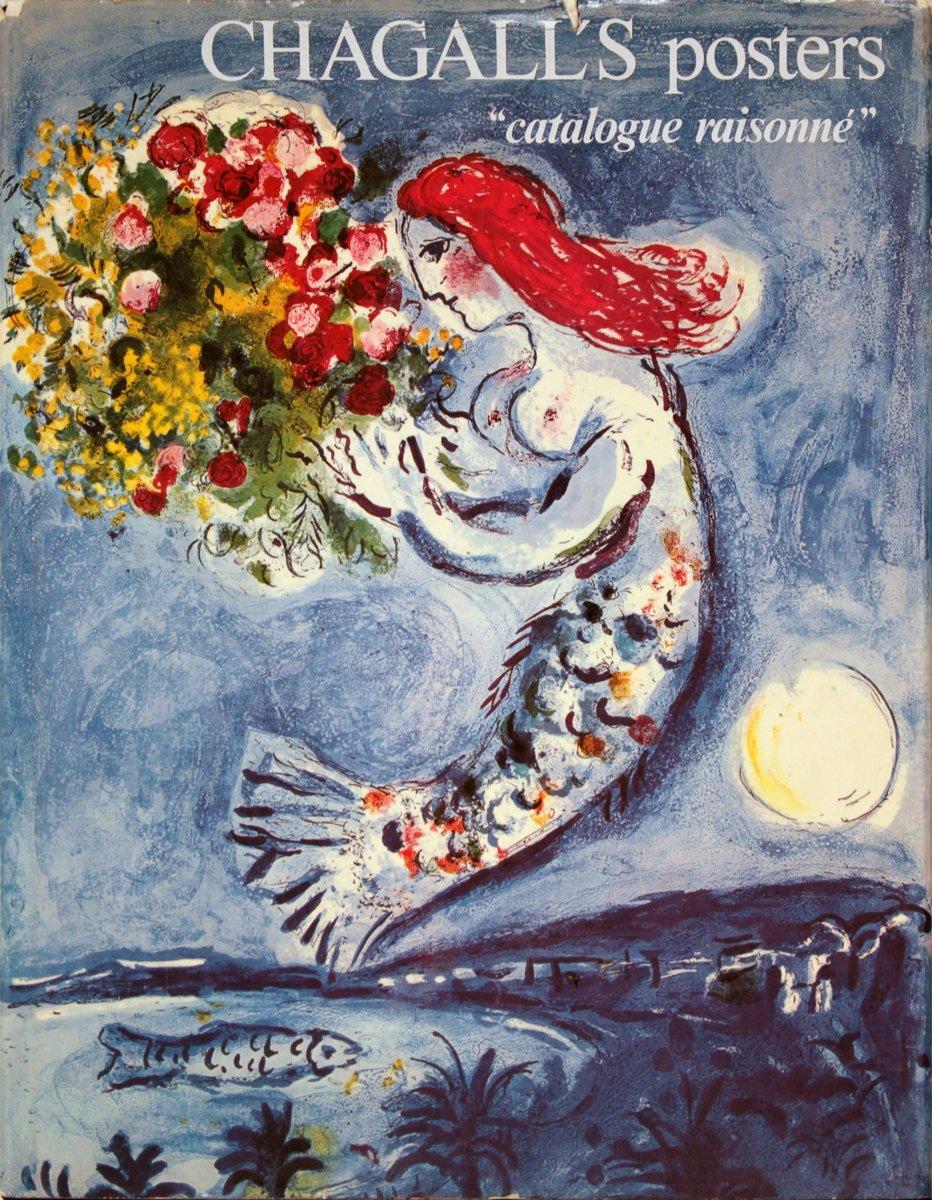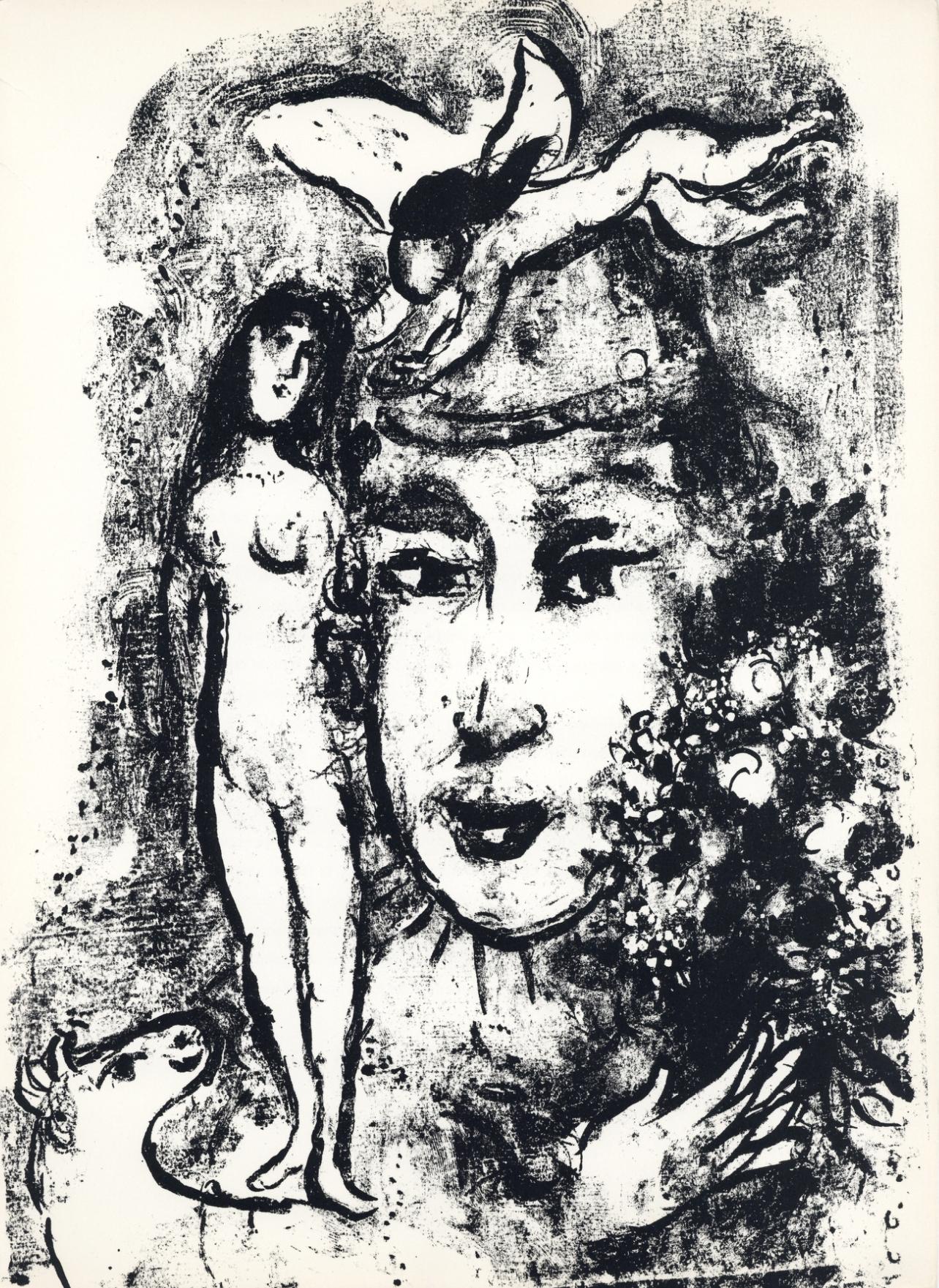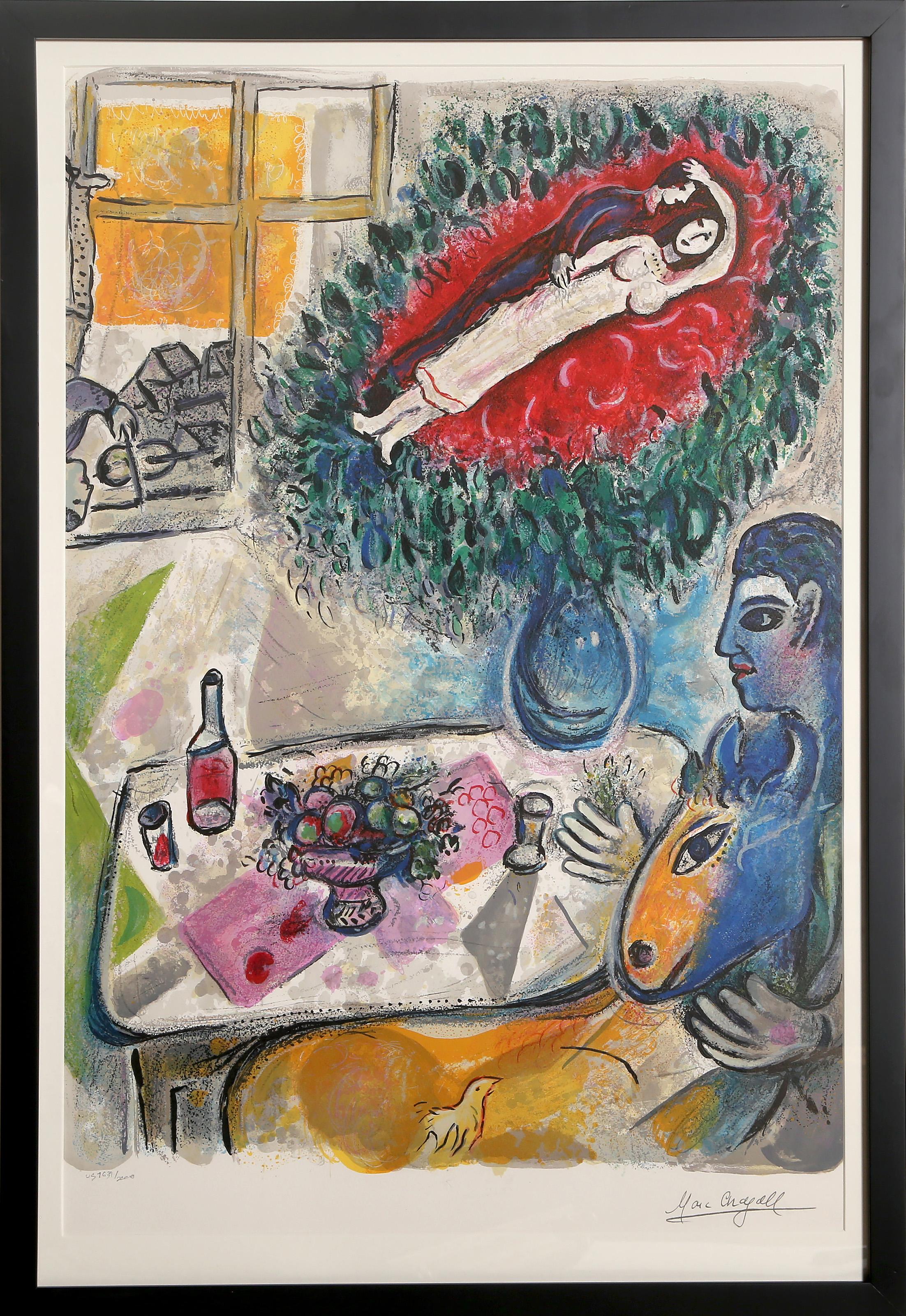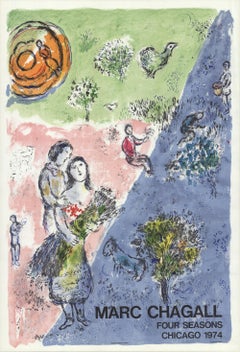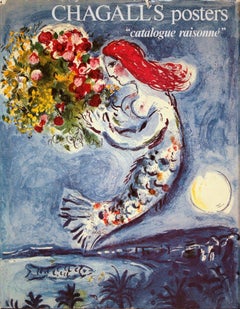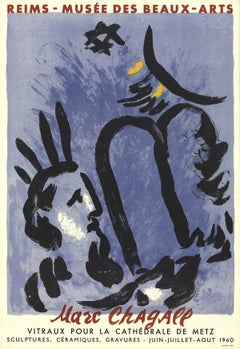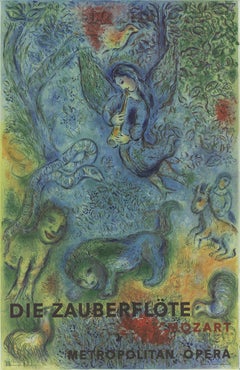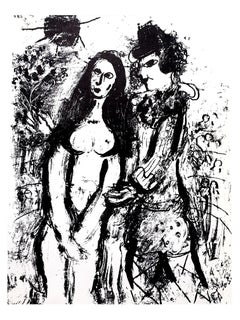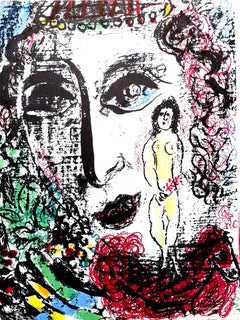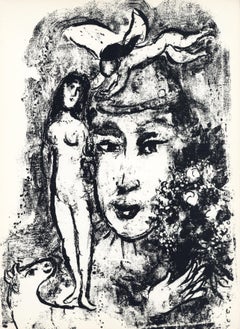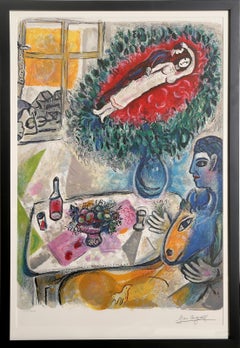Items Similar to After Marc Chagall 'The First Encounter' 1993- Original Poster
Want more images or videos?
Request additional images or videos from the seller
1 of 5
After Marc Chagall 'The First Encounter' 1993- Original Poster1993
1993
$60
$7520% Off
£46.61
£58.2620% Off
€52.89
€66.1120% Off
CA$85.79
CA$107.2420% Off
A$93.85
A$117.3220% Off
CHF 49.02
CHF 61.2720% Off
MX$1,121.59
MX$1,401.9920% Off
NOK 615.85
NOK 769.8220% Off
SEK 579.61
SEK 724.5220% Off
DKK 394.94
DKK 493.6820% Off
About the Item
Paper Size: 27 x 19 inches ( 68.58 x 48.26 cm )
Image Size: 27 x 19 inches ( 68.58 x 48.26 cm )
Framed: No
Condition: A-: Near Mint, very light signs of handling
Additional Details: Poster for exhibition held at the Israel Museum of Art
Shipping and Handling: We ship Worldwide. For Domestic and International shipments alike, we use heavy, thick-walled UPS and FedEx Approved shipping tubes to ship all items that are rollable. For items that cannot be rolled, we pack the item flat.
Attention International Buyers, Please Note: Import duties, taxes, and charges are not included in the item price or shipping cost. These charges are the buyer's responsibility. Please check with your country's customs office to determine what these additional costs will be prior to bidding or buying."
- Creation Year:1993
- Dimensions:Height: 27 in (68.58 cm)Width: 19 in (48.26 cm)Depth: 0.1 in (2.54 mm)
- Medium:
- Movement & Style:
- After:Marc Chagall (1887 - 1985, French)
- Period:
- Framing:Framing Options Available
- Condition:All items are carefully stored. Condition is a main concern, unless otherwise indicated, all items are in mint condition. Additional pictures are available upon request. Feel free to contact our team if you have any questions or concerns. Thank you.
- Gallery Location:Brooklyn, NY
- Reference Number:Seller: CB60821stDibs: LU1294114598722
About the Seller
4.9
Platinum Seller
Premium sellers with a 4.7+ rating and 24-hour response times
Established in 1992
1stDibs seller since 2019
2,692 sales on 1stDibs
Typical response time: 1 hour
- ShippingRetrieving quote...Shipping from: Brooklyn, NY
- Return Policy
More From This Seller
View AllMarc Chagall Exhibition Poster, The Four Seasons- STONE LITHOGRAPH Vintage
By (after) Marc Chagall
Located in Brooklyn, NY
This 1974 poster, printed by Mourlot and published by The First National Bank of Chicago, was created to commemorate the unveiling of Marc Chagall’s large mosaic at the Four Seasons...
Category
1970s Modern Prints and Multiples
Materials
Lithograph
1975 'Marc Chagall's Posters Catalogue Raisonne'
By Marc Chagall
Located in Brooklyn, NY
Marc Chagall's Posters: Catalogue Raisonné by Charles Sorlier is the definitive reference for Chagall’s poster art. Available in both English and French versions, this comprehensive ...
Category
1970s Modern Prints and Multiples
Materials
Lithograph
$216 Sale Price
42% Off
1960 After Marc Chagall 'Moses and the Tablets' STONE lithograph
By Marc Chagall
Located in Brooklyn, NY
Paper Size: 30.75 x 21 inches ( 78.105 x 53.34 cm )
Image Size: 26.5 x 19.75 inches ( 67.31 x 50.165 cm )
Framed: No
Condition: A: Mint
This striking poster titled "Moses and th...
Category
1960s Modern Prints and Multiples
Materials
Lithograph
$416 Sale Price
40% Off
1973 After Marc Chagall 'The Magic Flute (Die Zauberflote)' 2nd Edition
By Marc Chagall
Located in Brooklyn, NY
Paper Size: 38.5 x 25.75 inches ( 97.79 x 65.405 cm )
Image Size: 38.5 x 25.75 inches ( 97.79 x 65.405 cm )
Framed: No
Condition: A-: Near Mint, very light signs of handling
Ad...
Category
1970s Modern Prints and Multiples
Materials
Offset
$120 Sale Price
20% Off
1969 After Marc Chagall 'DLM No. 182 Cover' Modernism
By Marc Chagall
Located in Brooklyn, NY
Paper Size: 15 x 11 inches ( 38.1 x 27.94 cm )
Image Size: 15 x 11 inches ( 38.1 x 27.94 cm )
Framed: No
Condition: A-: Near Mint, very light signs of handling
Additional Deta...
Category
1960s Prints and Multiples
Materials
Lithograph
$280 Sale Price
20% Off
Marc Chagall 'Chagall Lithographe Tome I - Frontispice' 1963- Vintage
By Marc Chagall
Located in Brooklyn, NY
This is an above the edition impression of an original lithograph by Marc Chagall, printed in 1963 by Mourlot and published by André Sauret, Paris. It appears as page 93 in Chagall L...
Category
1960s Modern Prints and Multiples
Materials
Offset
You May Also Like
Marc Chagall - Original Lithograph
By Marc Chagall
Located in Collonge Bellerive, Geneve, CH
Marc Chagall
Original Lithograph
1963
Dimensions: 32 x 24 cm
Unsigned, as published in "Chagall Lithographe 1957-1962. VOLUME II"
Edition of several thousand
Condition : Excellent
M...
Category
1960s Surrealist Figurative Prints
Materials
Lithograph
Marc Chagall - Original Lithograph
By Marc Chagall
Located in Collonge Bellerive, Geneve, CH
Marc Chagall
Original Lithograph
1963
Dimensions: 32 x 24 cm
Reference: Chagall Lithographe 1957-1962. VOLUME II.
Condition : Excellent
Marc Chagall (born in 1887)
Marc Chagall was born in Belarus in 1887 and developed an early interest in art. After studying painting, in 1907 he left Russia for Paris, where he lived in an artist colony on the city’s outskirts. Fusing his own personal, dreamlike imagery with hints of the fauvism and cubism popular in France at the time, Chagall created his most lasting work—including I and the Village (1911)—some of which would be featured in the Salon des Indépendants exhibitions. After returning to Vitebsk for a visit in 1914, the outbreak of WWI trapped Chagall in Russia. He returned to France in 1923 but was forced to flee the country and Nazi persecution during WWII. Finding asylum in the U.S., Chagall became involved in set and costume design before returning to France in 1948. In his later years, he experimented with new art forms and was commissioned to produce numerous large-scale works. Chagall died in St.-Paul-de-Vence in 1985.
The Village
Marc Chagall was born in a small Hassidic community on the outskirts of Vitebsk, Belarus, on July 7, 1887. His father was a fishmonger, and his mother ran a small sundries shop in the village. As a child, Chagall attended the Jewish elementary school, where he studied Hebrew and the Bible, before later attending the Russian public school. He began to learn the fundamentals of drawing during this time, but perhaps more importantly, he absorbed the world around him, storing away the imagery and themes that would feature largely in most of his later work.
At age 19 Chagall enrolled at a private, all-Jewish art school and began his formal education in painting, studying briefly with portrait artist Yehuda Pen. However, he left the school after several months, moving to St. Petersburg in 1907 to study at the Imperial Society for the Protection of Fine Arts. The following year, he enrolled at the Svanseva School, studying with set designer Léon Bakst, whose work had been featured in Sergei Diaghilev's Ballets Russes. This early experience would prove important to Chagall’s later career as well.
Despite this formal instruction, and the widespread popularity of realism in Russia at the time, Chagall was already establishing his own personal style, which featured a more dreamlike unreality and the people, places and imagery that were close to his heart. Some examples from this period are his Window Vitebsk (1908) and My Fianceé with Black Gloves (1909), which pictured Bella Rosenfeld, to whom he had recently become engaged.
The Beehive
Despite his romance with Bella, in 1911 an allowance from Russian parliament member and art patron Maxim Binaver enabled Chagall to move to Paris, France. After settling briefly in the Montparnasse neighborhood, Chagall moved further afield to an artist colony known as La Ruche (“The Beehive”), where he began to work side by side with abstract painters such as Amedeo Modigliani and Fernand Léger as well as the avant-garde poet Guillaume Apollinaire. At their urging, and under the influence of the wildly popular fauvism and cubism, Chagall lightened his palette and pushed his style ever further from reality. I and the Village (1911) and Homage to Apollinaire (1912) are among his early Parisian works, widely considered to be his most successful and representative period.
Though his work stood stylistically apart from his cubist contemporaries, from 1912 to 1914 Chagall exhibited several paintings at the annual Salon des Indépendants exhibition, where works by the likes of Juan Gris, Marcel Duchamp and Robert Delaunay were causing a stir in the Paris art world. Chagall’s popularity began to spread beyond La Ruche, and in May 1914 he traveled to Berlin to help organize his first solo exhibition, at Der Sturm Gallery. Chagall remained in the city until the highly acclaimed show opened that June. He then returned to Vitebsk, unaware of the fateful events to come.
War, Peace and Revolution
In August 1914 the outbreak of World War I precluded Chagall’s plans to return to Paris. The conflict did little to stem the flow of his creative output, however, instead merely giving him direct access to the childhood scenes so essential to his work, as seen in paintings such as Jew in Green (1914) and Over Vitebsk (1914). His paintings from this period also occasionally featured images of the war’s impact on the region, as with Wounded Soldier (1914) and Marching (1915). But despite the hardships of life during wartime, this would also prove to be a joyful period for Chagall. In July 1915 he married Bella, and she gave birth to a daughter, Ida, the following year. Their appearance in works such as Birthday (1915), Bella and Ida by the Window (1917) and several of his “Lovers” paintings give a glimpse of the island of domestic bliss that was Chagall’s amidst the chaos.
To avoid military service and stay with his new family, Chagall took a position as a clerk in the Ministry of War Economy in St. Petersburg. While there he began work on his autobiography and also immersed himself in the local art scene, befriending novelist Boris Pasternak, among others. He also exhibited his work in the city and soon gained considerable recognition. That notoriety would prove important in the aftermath of the 1917 Russian Revolution when he was appointed as the Commissar of Fine Arts in Vitebsk. In his new post, Chagall undertook various projects in the region, including the 1919 founding of the Academy of the Arts. Despite these endeavors, differences among his colleagues eventually disillusioned Chagall. In 1920 he relinquished his position and moved his family to Moscow, the post-revolution capital of Russia.
In Moscow, Chagall was soon commissioned to create sets and costumes for various productions at the Moscow State Yiddish Theater...
Category
1960s Surrealist Figurative Prints
Materials
Lithograph
Marc Chagall, Face, Woman and Goat, from Derriere le miroir, 1964
By Marc Chagall
Located in Southampton, NY
This exquisite lithograph by Marc Chagall (1887–1985), titled Visage, Femme et Chevre (Face, Woman and Goat), from the folio Derriere le miroir, No. 147, originates from the 1964 edi...
Category
1960s Expressionist Figurative Prints
Materials
Lithograph
$716 Sale Price
44% Off
Free Shipping
Reverie, Modern Lithograph after Marc Chagall
By Marc Chagall
Located in Long Island City, NY
Marc Chagall, After, Russian (1887 - 1985) - Reverie, Year: Printed 1989, Medium: Lithograph, fascimile signed and numbered in pencil, Edition: 2000, Image Size: 31 x 22 inches, ...
Category
1980s Modern Figurative Prints
Materials
Lithograph
Odyssey - Lithograph after Marc Chagall - 1989
By Marc Chagall
Located in Roma, IT
Odyssey is a splendid artwork realized after Marc Chagall and published in 1989.
Mixed colored lithograph on paper.
This beautiful artwork is from the German edition of Chagall's O...
Category
1980s Surrealist Figurative Prints
Materials
Lithograph
Marc Chagall, The Violinist, from Color of Love, 1958 (after)
By Marc Chagall
Located in Southampton, NY
This exquisite lithograph and pochoir after Marc Chagall (1887–1985), titled Le Violoneux (The Violinist), from the folio Couleur amour, 13 Aquarelles, Gouaches, Lavis (Color of Love...
Category
1950s Modern Figurative Prints
Materials
Lithograph, Stencil
$7,196 Sale Price
20% Off
Free Shipping
